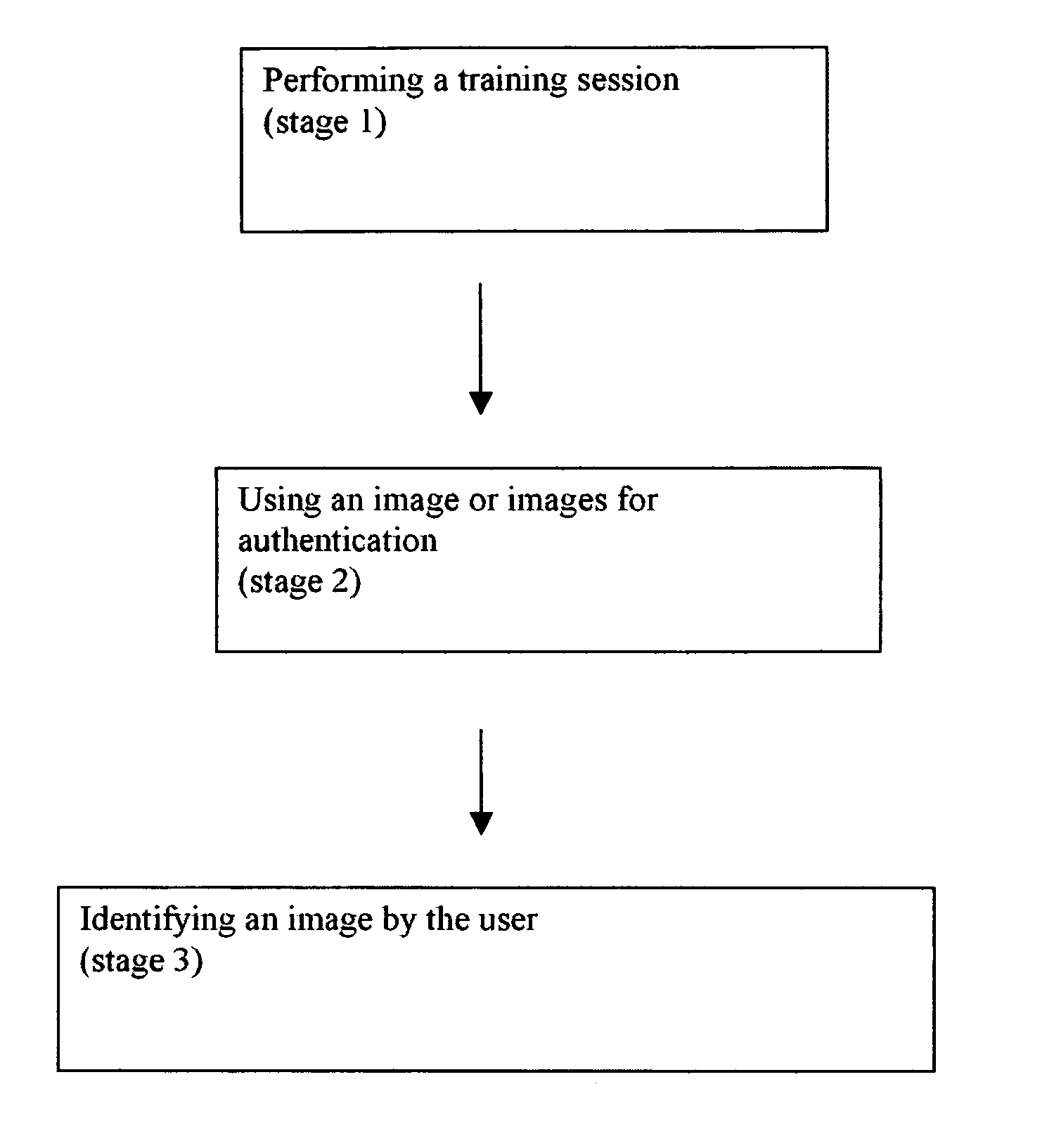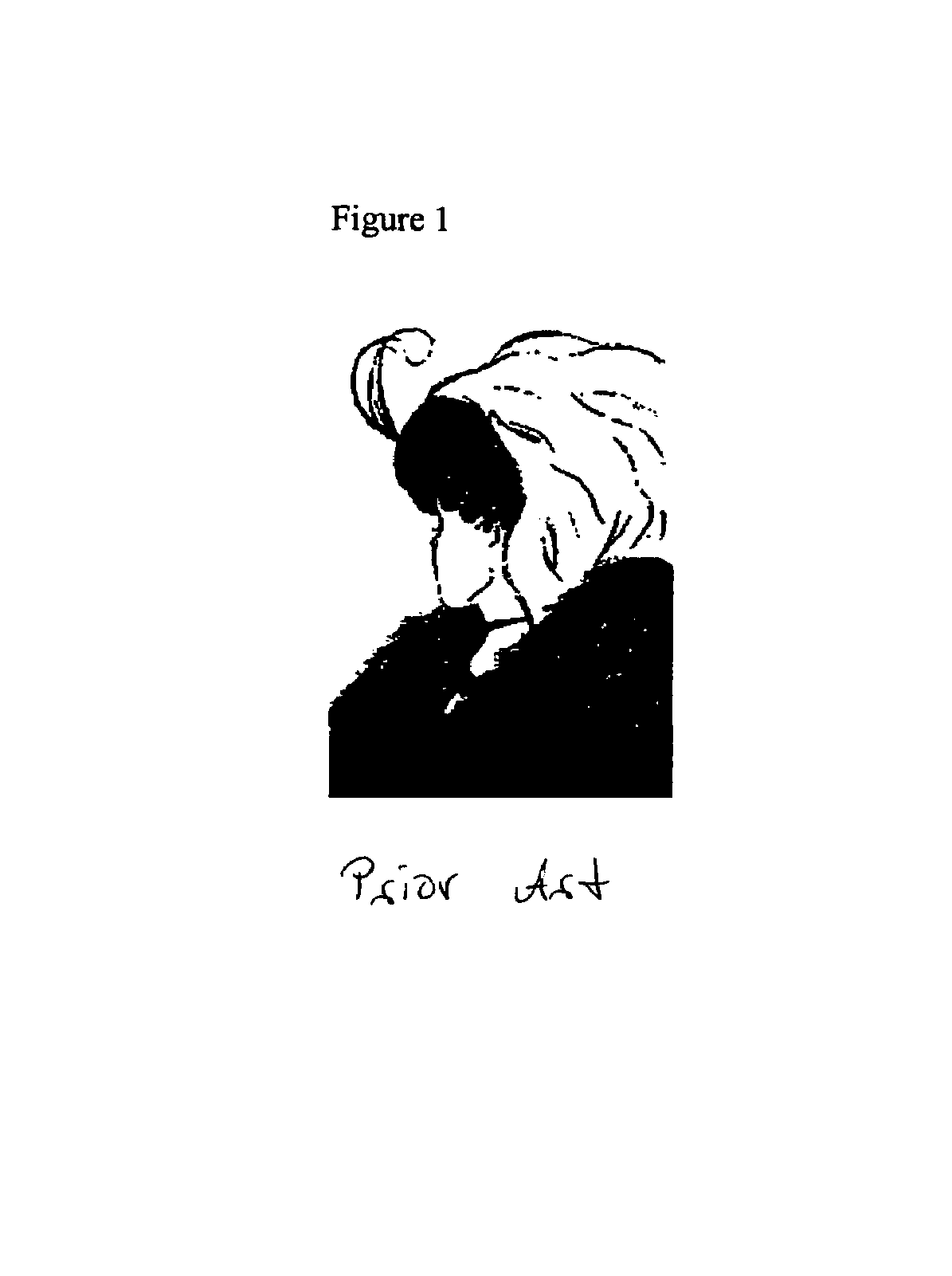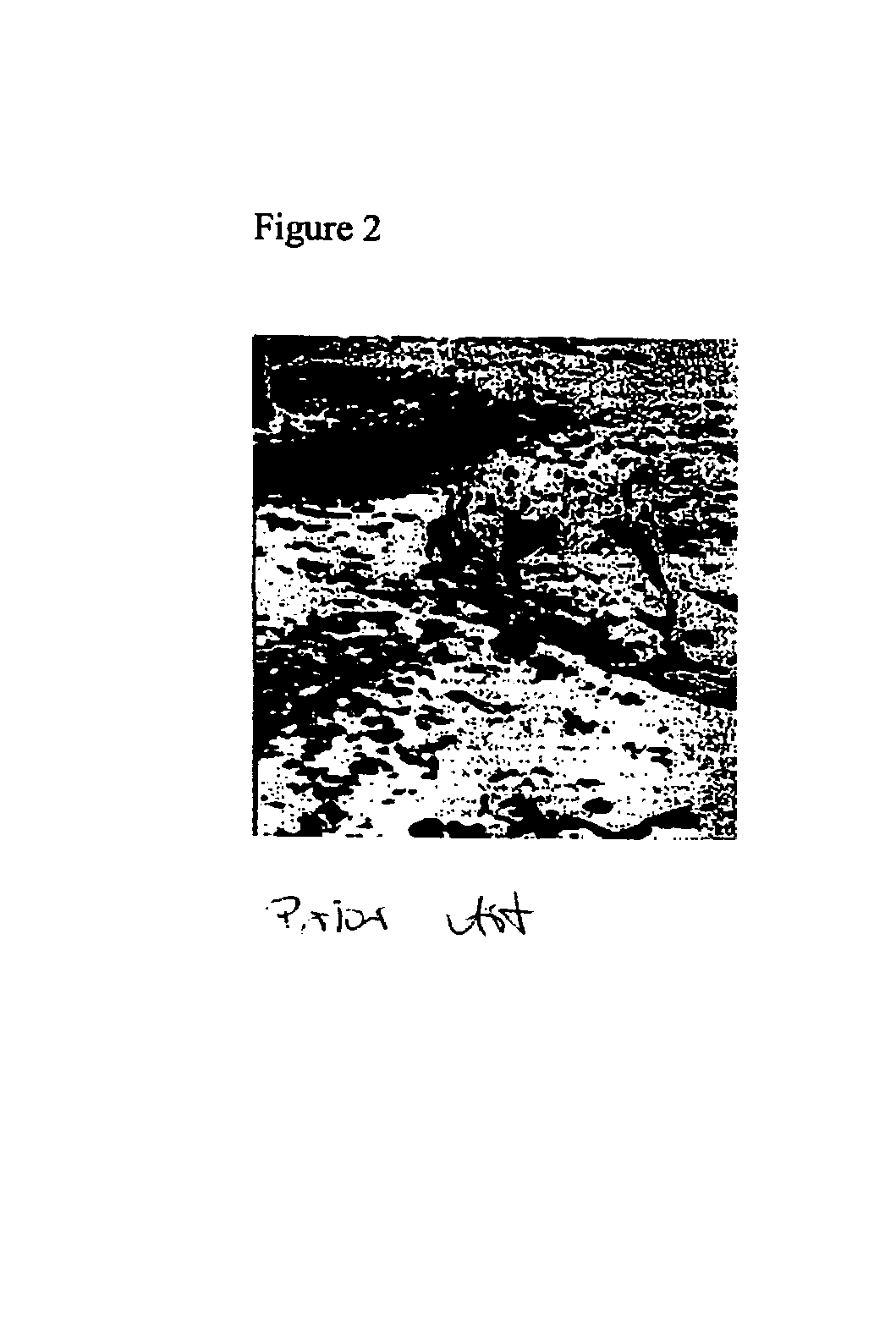Imprinting an identification certificate
a technology of identification certificate and imprinting, which is applied in the field of imprinting identification certificates, can solve the problems of inability to run it backwards to extract, the imprinting is not taught or suggested in the background art as a cryptographic primitive, and the capacity for complex experiences, etc., and achieves the effect of convenient use and easy disclosur
- Summary
- Abstract
- Description
- Claims
- Application Information
AI Technical Summary
Benefits of technology
Problems solved by technology
Method used
Image
Examples
example 1
Visual Perception as the Sensory Mechanism
[0060]This Example describes an illustrative method for certificates based on visual recognition, by using a very large database of images for training, followed by recognition of at least one image. Recognition of images forms the cryptographic primitive, with visual perception and recognition as the sensory mechanism for the method of the present invention. Preferably recognition is performed in the form of discrimination, such that the user is able to select a correct image from a plurality of images. The correct image may optionally have been shown previously, or alternatively may be similar to a previously displayed image during the training process.
[0061]The exemplary method of the present invention, shown in FIG. 3, preferably starts with a training session in stage 1, during which the user is shown a relatively large set of images, preferably randomly selected from a very large database, preferably at least about 100,000 images, alth...
example 2
Verbal Perception as the Sensory Mechanism
[0081]This Example relates to the recognition of pseudowords, in which recognition of the pseudowords forms the cryptographic primitive, and verbal perception and recognition is the example of the sensory mechanism. A recognition protocol can also optionally be designed with strings of letters, when it is not possible or not desirable to use pictures because of the additional memory and storage required, or because an adequate display facility is not available. Instead of pictures, this implementation of the present invention uses pseudowords, generated by taking a list of over a thousand common English words obtained from Wilson (10), and modifying them in one letter position using the program provided at (11). A native English speaker then selected pseudowords which are pronounceable, and do not exist as valid words. In this construction, the method followed a protocol similar to the one used in (12). Of course, the method could optionally...
example 3
Skill Acquistion as the Sensory Mechanism
[0084]This Example relates to certificates or training toward a cryptographic primitive that is based on skill acquisition, in which performance of the acquired skill represents the cryptographic primitive.
[0085]Skill acquisition may optionally be performed as based on the AGL (Artificial Grammar Learning) task first introduced to the literature of cognitive psychology by Reber (1967). In his experiments, subjects first learn sets of approximately 20 strings of three to eight characters. Although these letter strings might appear random, they have, in fact, been generated by a Finite State Machine (FSM) such as the one used by Reber, shown in FIG. 8. FIG. 8 shows a finite state machine (FSM) which generates a “grammar” of strings.
[0086]To produce a string with an FSM of FIG. 8, one begins at the “start” arrow at the left, and traces around the diagram in the direction of the arrows until one reaches “end” on the right. Each transition from on...
PUM
 Login to View More
Login to View More Abstract
Description
Claims
Application Information
 Login to View More
Login to View More - R&D
- Intellectual Property
- Life Sciences
- Materials
- Tech Scout
- Unparalleled Data Quality
- Higher Quality Content
- 60% Fewer Hallucinations
Browse by: Latest US Patents, China's latest patents, Technical Efficacy Thesaurus, Application Domain, Technology Topic, Popular Technical Reports.
© 2025 PatSnap. All rights reserved.Legal|Privacy policy|Modern Slavery Act Transparency Statement|Sitemap|About US| Contact US: help@patsnap.com



